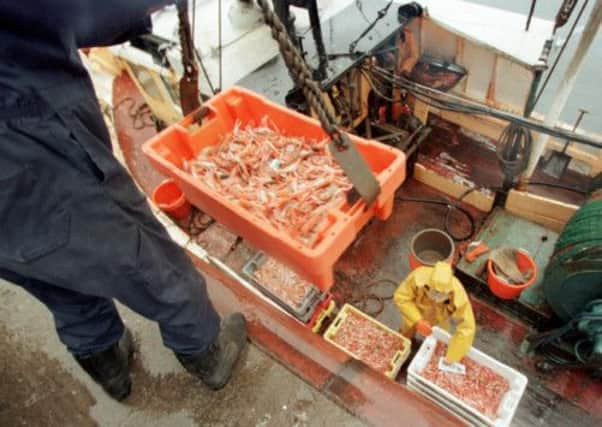Clyde prawn fisheries on borrowed time, says study


The virtual disappearance of fish such as cod and haddock in the Firth of Clyde over the past 20 years means that the industry is heavily dependent on prawns, the experts said. And they warned there is already evidence the shellfish are being infected by a microscopic parasite.
Environment groups are now urging a return to a more mixed fishery to help to preserve livelihoods in the area.
Advertisement
Hide AdAdvertisement
Hide AdThe researchers, from York University’s environment department, focused on how overfishing has reduced populations and biodiversity across much of the world’s oceans, leading to many fisheries becoming increasingly dependent on a handful of valuable shellfish.
As landings of large predators such as cod and haddock have declined, catches of prawns, scallops and lobsters have rocketed, with the species thriving in environments that are unnaturally low in white fish and often damaged by trawling and dredging.
The scientists warned that such fisheries are at high risk of collapse from disease, species invasions and climate change.
Dr Bryce Stewart, one of the lead researchers, said the Firth of Clyde – first identified six years ago as “one of the most degraded marine environments in the United Kingdom” – had provided a special focus for the team’s global research. Their research has shown that prawns now completely dominate the fishery.
The report said: “In 1985, finfish (such as cod and haddock) made up more than 60 per cent of the landings by weight and 3 per cent by value, but by 2008 this had fallen to just 2 per cent by weight and 0.5 per cent by value.
“Now Nephrops (prawns) are the most valuable fishery in the Clyde, making up 84 per cent of landings by weight and 87 per cent by value. These are targeted by around 120 vessels, of which the majority of landings are made by trawlers resident to the Clyde.”
The study said the Clyde is already following the typical “boom-and-bust” pattern exhibited by many of the world’s over-exploited fisheries.
It said: “There are already signs of high rates of parasitism of Clyde Nephrops by a microscopic parasite, also known as ‘bitter crab disease’, for its capacity to reduce both taste and texture of Nephrops and other crustaceans, or as ‘smoking crab disease’… When complete, the free-swimming stage of the parasite then erupts from every aperture and joint, giving the prawn the appearance of smoking.”
Advertisement
Hide AdAdvertisement
Hide AdDr Stewart told The Scotsman: “We have identified barriers to recovery in the Clyde. What you have is a different eco-system to what you had before. There are hardly any predators left, like cod, to feed on some of the species like prawn.”
Dr Stewart stressed that the Clyde prawn and scallop fisheries still provided a good living for the fishermen who remain on the Clyde, and that there was no immediate economic incentive for them to switch to another fishery or reduce their catches.
However, he added: “The point of the study is that when you have these situations you have to ask yourself what if something goes wrong with the prawn fishery, then what do we catch?”
The findings of the study have been seized on by the Sustainable Inshore Fisheries Trust.
Director Charles Millar said: “The Clyde prawn fishery really is in the last chance saloon. Although it provides lucrative rewards in the short-term, if stocks were to collapse, and there are international precedents, then the Clyde would be devoid of a material commercial fishery.”